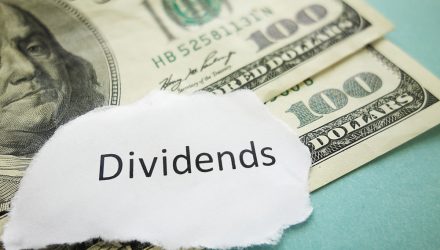While investors had to contend with rocky markets in 2022, many found refuge in dividend-themed exchange traded funds.
Dividend-related ETFs attracted about $45 billion in net inflows, making up a significant portion of flows into Morningstar’s large-value fund category, Barron’s reported.
Furthermore, many of the biggest dividend-themed ETFs by assets also outperformed the broader equity markets.
“You’re going to win by not losing because you have a much smaller hole to dig out of,” Simeon Hyman, global investment strategist at ProShares, told Barron’s.
For instance, the ProShares S&P 500 Aristocrats ETF (NOBL), which only targets S&P 500 companies that have increased their dividends for at least 25 consecutive years, only fell 12% over the first half of 2022, compared to the -20% drop in the S&P 500. The iShares Core High Dividend ETF (HDV), which is composed of relatively high dividend paying U.S. equities, even saw a small positive return.
Among the most popular dividend ETF plays over the first half of 2022, the Schwab US Dividend ETF (SCHD) saw $7.4 billion in net inflows, the Vanguard High Dividend Yield Index ETF (VYM) attracted $5.8 billion, the iShares Core High Dividend ETF (HDV) added $5.5 billion, the JPMorgan Equity Premium Income ETF (JEPI) brought in $5.4 billion, and the SPDR Portfolio High Dividend ETF (SPYD) saw $3.0 billion in inflows, according to Morningstar data.
“Investors are looking for income,” Bryan Armour, director of passive strategies research for North America at Morningstar, told Barron’s. “That doesn’t necessarily mean they have to buy bonds in a rising interest-rate environment.”
Among the better performers in the dividend space, energy-related ETFs saw higher performances, which is no surprise given the broad rally in the energy markets this year. While sector funds may help investors garner more targeted plays, it is hard to time these types of markets.
“The only way you’re up year to date is by taking substantial risk and being concentrated in things like energy and introducing things like market timing to the equation, which is extremely difficult to do,” Armour added.
For more news, information, and strategy, visit the Dividend Channel.

